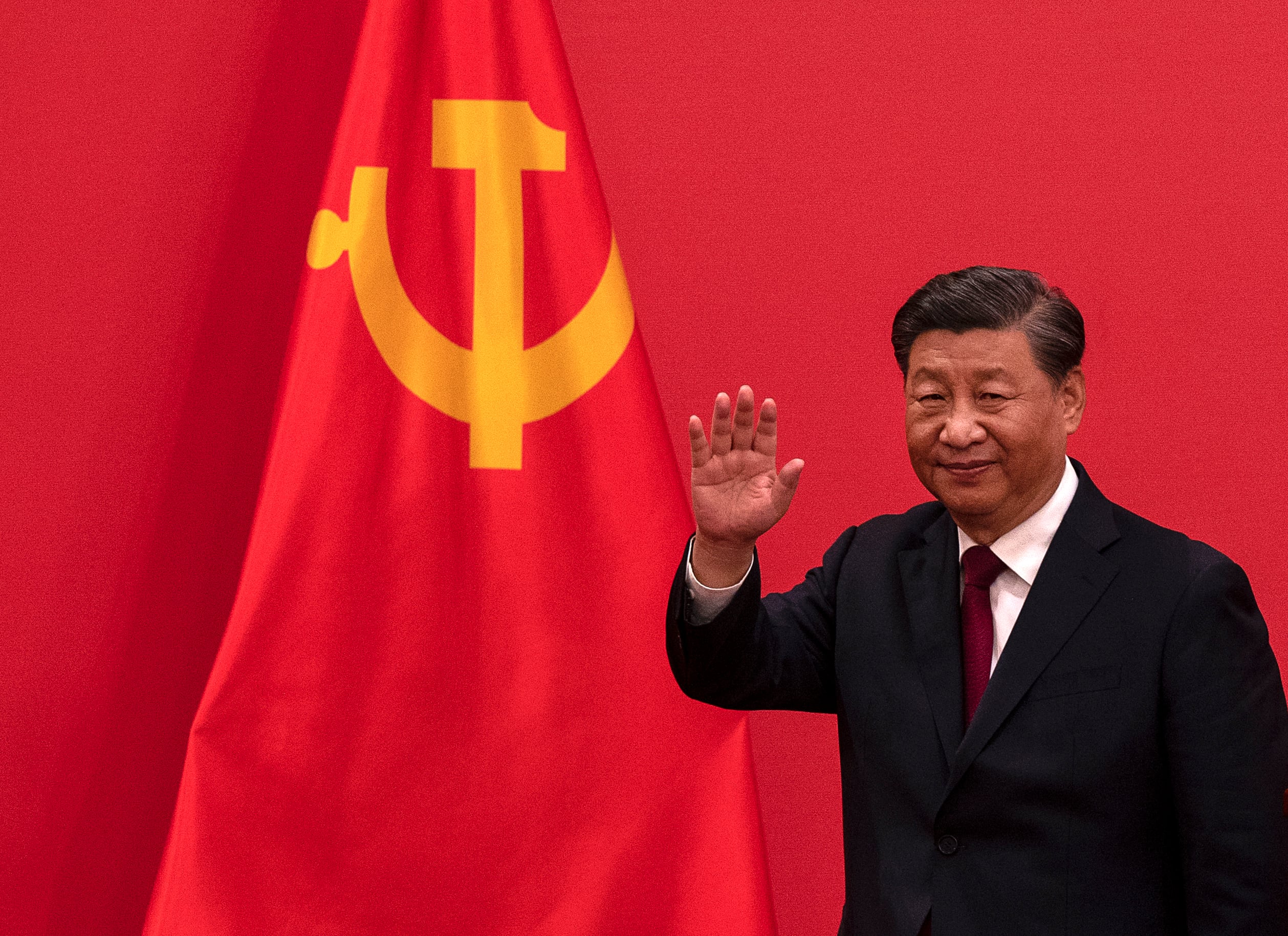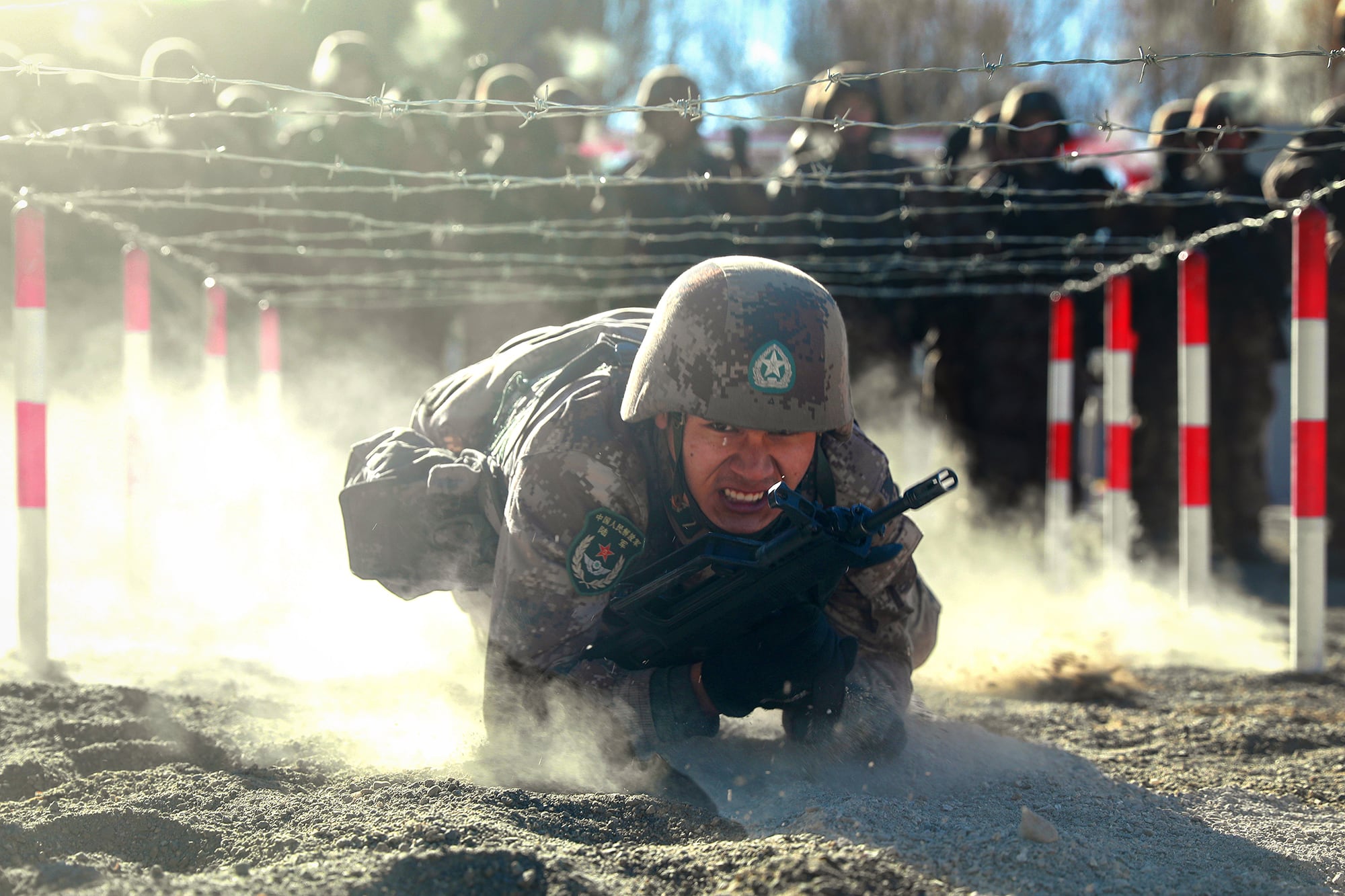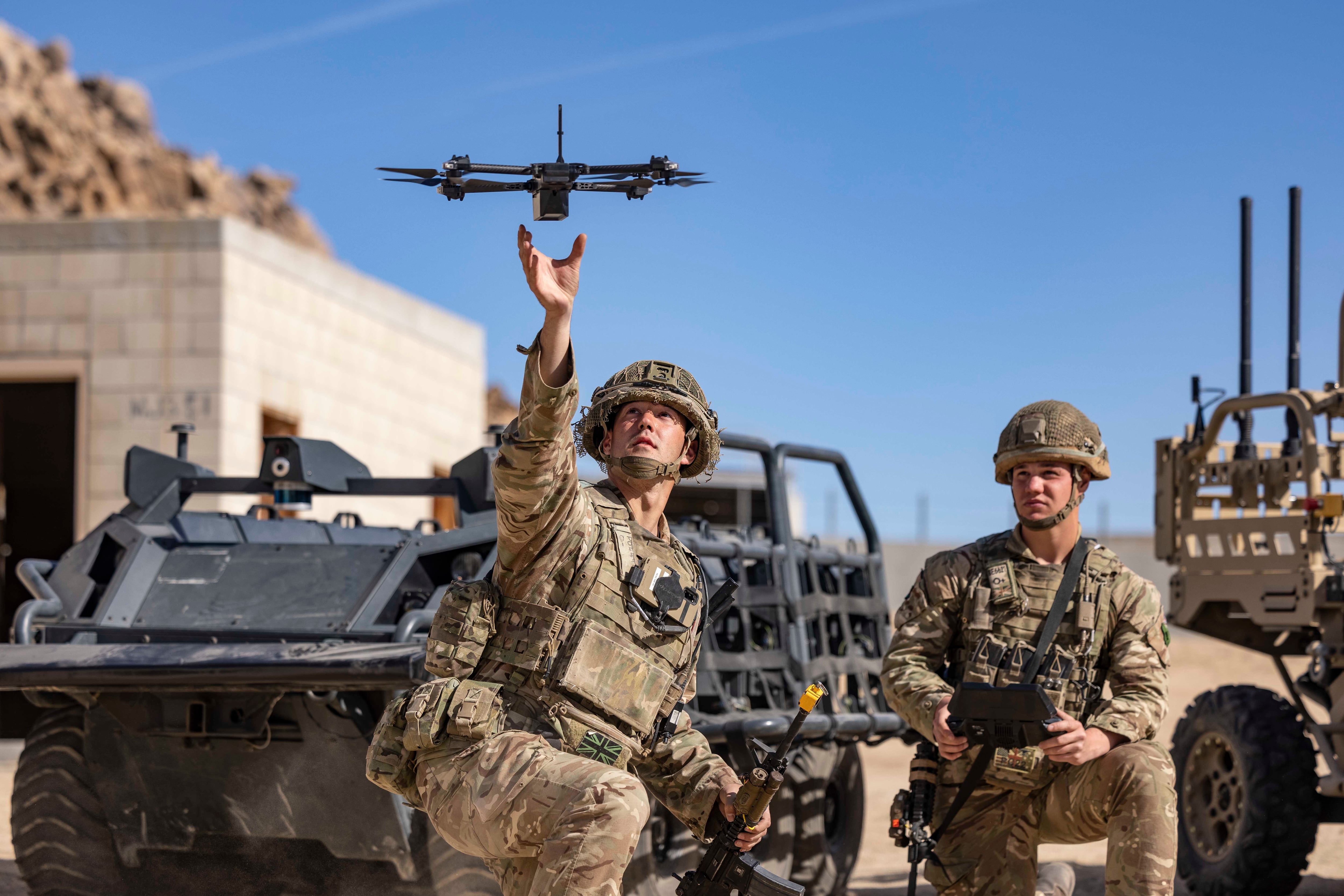WASHINGTON — China is pursuing a new military construct known as Multi-Domain Precision Warfare to align its forces from cyber to space, an effort U.S. officials say is fueled by a need to counter the Pentagon’s Joint All-Domain Command and Control initiative.
Like JADC2, the MDPW core operational concept, as it’s known, relies on interlinked command and control, communications, computers, intelligence, surveillance and reconnaissance to quickly coordinate firepower and expose foreign weaknesses, according to the annual China Military Power Report, which the U.S. Department of Defense delivered to Congress in November.
“As we note in the report, this new concept is intended to help identify key vulnerabilities in an adversary’s operational system and then to launch precision strikes against those vulnerabilities, which could be kinetic or non-kinetic,” a senior U.S. defense official told reporters Nov. 28, speaking on condition of anonymity. “Basically, it’s a way that they’re thinking about looking across domains to identify vulnerabilities in an adversary’s operational system and then to exploit those to cause its collapse.”
The Chinese military, the People’s Liberation Army, “refers to systems destruction warfare as the next way of war,” the official added. Under that premise, warfare is no longer solely focused on the destruction of enemy forces; rather, it is won by the team that can disrupt, cripple or outright destroy the other’s underlying networks and infrastructure.
RELATED

The U.S. considers China the No. 1 threat to its national security, with Russia a close second. The two powers have long invested in military science and technology. Confronting them represents a sea change to the counterinsurgency operations that defined a previous — and lingering — American era in the Middle East.
“Clearly, the United States has been primarily focused on other threats for the last two decades. That has changed,” Assistant Secretary of Defense for Indo-Pacific Security Affairs Ely Ratner said at a Dec. 8 event hosted by the American Enterprise Institute, a think tank. “In part, it started changing during the Obama administration. That accelerated under the Trump administration and really crystallized under this administration.”
To maintain an advantage over both powers and other technologically savvy adversaries, the Pentagon is attempting to realize JADC2, a connect-everything-everywhere campaign for communications and international collaboration. By linking once-disparate troops and databases across land, air, sea, space and cyber, defense leaders say the U.S. can strike faster, more efficiently and from farther away.
The notion, though, faces scrutiny from lawmakers and outside experts, who have expressed reservations about coordination between the Army, Air Force and Navy; how success will ultimately be measured; and its overarching price tag. The Navy alone wanted some $195 million for Project Overmatch, its contribution to JADC2, for fiscal 2023, a 167% jump over the $73 million it received in 2022.
Overmatch, specifically, is being executed behind closed doors, with service leaders reluctant to talk and details remaining skeletal. The clandestine route is taken to keep China off-balance and to stay out of range of its many ears and eyes, according to Bryan Clark, a senior fellow and director of the Center for Defense Concepts and Technology at the Hudson Institute.
“A key to that is not tipping your hand with regard to the things you’re actually trying to put together. They’re very careful on operational security for these Overmatch-related items,” Clark told C4ISRNET in early November. “Since we’re looking at this in the very near-term way, and since the Navy has failed to really field a wide variety and number of unmanned systems, the Navy’s only got a few tricks up its sleeve in terms of how it can combine different systems to create kill chains. Because of those limits, they’ve got to be really careful about showing which combinations they think are most valuable.”
Officials in Beijing have for years pursued an information-fluent force capable of dominating networks and bombarding targets from a sprawl of locations with a mix of weaponry.

“PRC military writings describe informatized warfare as the use of information technology to create an operational system-of-systems, which would enable the PLA to acquire, transmit, process, and use information during a conflict to conduct joint military operations across the ground, maritime, air, space, cyberspace, and electromagnetic spectrum domains,” the power report states. “The PLA is accelerating the incorporation of command information systems, providing forces and commanders with enhanced situational awareness and decision support to more effectively carry out joint missions and tasks to win informatized local wars.”
JADC2 leans on artificial intelligence and sophisticated computing to speedily sift through mountains of data and inform battlefield decisions. China’s MDPW — first teased in 2021, according to the report — and its other approaches to conflict do, too.
“As the PLA continues to focus on improving its ability to fight and win informatized wars, future information systems will likely implement emerging technologies such as automation, big data, the internet of things, artificial intelligence, and cloud computing to improve process efficiencies,” it states. “The PLA has already begun this process by embracing big data analytics that fuse a variety of data to improve automation and to create a comprehensive, real-time picture for warfighters.”
The Pentagon’s public spending on AI, including autonomy, mushroomed to $2.5 billion in fiscal 2021, after breaking $600 million 2016. The software-centric technology can help vehicles navigate, predict when maintenance is required and assist identification and classification of targets. The U.S. Air Force’s chief information officer, Lauren Knausenberger, in November said the service needs to “automate more” despite already “doing some very interesting things” with AI in the lab, on the battlefield and “in things that we are building today.”
At least 600 AI projects, including several related to major weapons systems, such as the MQ-9 Unmanned Aerial Vehicle, were underway as of April 2021, according to the Government Accountability Office, a federal watchdog. At least 232 ventures are being handled by the Army. The Air and Space forces are together dealing with more than 80.
RELATED

To thwart the increasingly international ambitions of China, the U.S. is forging information-sharing alliances with friendly nations in the Indo-Pacific region. They include Australia, India, Japan and South Korea. Such arrangements are a pillar of JADC2, which involves a so-called mission-partner environment where data from a spectrum of foreign sources can be collected, secured and distributed.
Senators earlier this year in a draft of the annual defense bill instructed the Defense Department to focus on the buildout of JADC2 at U.S. Indo-Pacific Command — a tacit recognition of China’s power amid a bloodbath in Ukraine. While lawmakers are concerned about Eastern Europe, and have supported the shipment of materiel to the frontlines, China remains a long-term, disruptive challenge.
The Pentagon’s Ratner said the China Military Power Report documents the “growing assertiveness, this growing coercion, as it relates to the East China Sea, as it relates to the South China Sea, on the line of actual control against India and, of course, against Taiwan.”
“We’re also seeing a more-global PLA,” he said, “one that is pursuing installations around the world, very ambitious aspirations to be projecting power, sustaining power, overseas.”
Colin Demarest was a reporter at C4ISRNET, where he covered military networks, cyber and IT. Colin had previously covered the Department of Energy and its National Nuclear Security Administration — namely Cold War cleanup and nuclear weapons development — for a daily newspaper in South Carolina. Colin is also an award-winning photographer.








